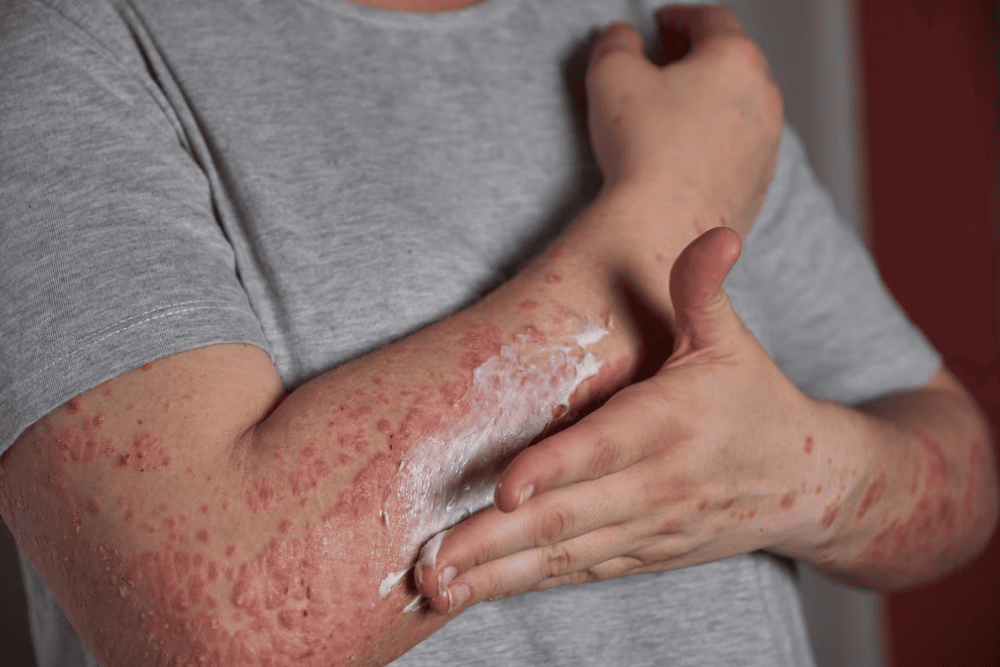For many new parents, the appearance of a birthmark on their newborn can be a source of confusion, anxiety, and endless questions. Among the most common types of vascular birthmarks are haemangiomas, often affectionately called “strawberry marks.” While generally benign, understanding what they are, how they develop, and when to seek medical advice is crucial. This comprehensive guide will delve into the world of haemangiomas, providing clarity and peace of mind for families in India and beyond.
What Exactly Are Haemangiomas?
A haemangioma is a type of benign tumour (non-cancerous growth) made up of blood vessels. Unlike other birthmarks that are present at birth, most infantile haemangiomas (IH) appear a few days or weeks after birth, typically within the first month. They are the most common tumours of infancy, affecting approximately 4-5% of infants. Girls are more commonly affected than boys, and they are seen more frequently in premature babies and those with low birth weight.
Imagine a cluster of tiny, rapidly multiplying blood vessels. That’s essentially what a haemangioma is. These growths can vary significantly in size, shape, and location. While they can appear anywhere on the body, common sites include the face, scalp, neck, and trunk.

The Lifecycle of a Haemangioma: Growth, Rest, and Regression
One of the most characteristic features of haemangiomas is their unique lifecycle, which involves three distinct phases:
- Proliferative Phase (Growth Phase): This is the initial stage, usually starting within the first few weeks of life and lasting until about 6-9 months of age, sometimes up to 12 months. During this phase, the haemangioma grows rapidly in size and prominence. It may appear as a small red spot, a faint patch, or a raised bump, which then enlarges quickly. The colour typically deepens to a bright red or purplish hue.
- Involution/Resting Phase: After the proliferative phase, the growth of the haemangioma slows down considerably and eventually stops. This marks the beginning of the involution or resting phase.
- Involuting/Regression Phase: This is the most reassuring phase, where the haemangioma begins to shrink and fade. This process can take several years, often continuing until a child is 5-10 years old, or even older. The red colour gradually lightens, often turning to a dull grey or yellowish-white, and the mass itself becomes softer and flatter. In many cases, the haemangioma will completely disappear, leaving behind little or no trace. However, some may leave residual skin changes like discolouration, a slightly stretched appearance, or a textured surface.
It’s crucial for parents to understand this natural progression to avoid unnecessary alarm during the growth phase and to patiently monitor the involution.
Types of Haemangiomas: Surface, Deep, and Mixed
Haemangiomas are broadly classified based on their depth in the skin:
- Superficial Haemangiomas: These are the most commonly recognized “strawberry marks.” They are located on the surface of the skin and appear as bright red, raised, soft bumps with a clear texture resembling a strawberry.
- Deep Haemangiomas: These occur deeper under the skin’s surface and may not be immediately obvious. They can appear as a bluish or purplish swelling, sometimes with a warmer temperature than the surrounding skin. Because they are deeper, they may be less distinctly visible but can still cause significant swelling.
- Mixed Haemangiomas: As the name suggests, these have both superficial and deep components, presenting as a combination of a red surface lesion and a deeper bluish swelling.
When Do Haemangiomas Need Medical Attention?
While most haemangiomas are harmless and resolve on their own, certain situations warrant immediate medical evaluation by a paediatrician or a dermatologist specializing in vascular anomalies. These include:
- Location that interferes with vital functions: Haemangiomas near the eye can obstruct vision, potentially leading to amblyopia (lazy eye). Those around the mouth can interfere with feeding or breathing. Haemangiomas on the nose or ear can cause disfigurement.
- Rapid Growth or Large Size: Extremely fast growth or very large haemangiomas, especially on the face or near critical organs, should be monitored closely.
- Ulceration: This is a common complication, especially in areas prone to friction (like the diaper area) or rapidly growing lesions. An ulcerated haemangioma is an open sore that can be painful, bleed, or become infected. This requires prompt medical attention.
- Multiple Haemangiomas: The presence of many (typically five or more) cutaneous haemangiomas may indicate the possibility of internal haemangiomas, particularly in the liver. This requires further investigation.
- PHACE Syndrome: A rare but important condition, PHACE syndrome is characterized by large, segmental haemangiomas on the face or scalp, combined with abnormalities in the posterior fossa of the brain, cerebral arteries, heart, and eye. Early diagnosis is vital.
- LUMBAR Syndrome: Another rare association, involving lower body haemangiomas with urogenital, ulceration, myelopathy, bony deformities, anorectal, and renal anomalies.
If you observe any of these concerning signs, consult a doctor without delay. In India, many leading hospitals have specialized paediatric dermatology or vascular anomaly clinics that can provide expert care.
Diagnosing Haemangiomas
Diagnosis is typically made clinically by a doctor based on the characteristic appearance and growth pattern. In some cases, especially for deep or atypical lesions, imaging studies like ultrasound, MRI, or CT scan may be performed to assess the size, depth, and extent of the haemangioma, and to rule out other conditions.
Treatment Options for Haemangiomas
The majority of haemangiomas do not require treatment and are simply observed through their natural course of involution. However, for those that are problematic (e.g., interfering with function, ulcerated, or causing significant disfigurement), several effective haemangioma treatment options are available:
Pharmacological Treatments:
- Beta-blockers (Oral Propranolol): This is currently the first-line and most effective treatment for problematic haemangiomas. Propranolol works by constricting blood vessels and inhibiting the growth of new ones, accelerating the involution process. It is generally safe but requires careful monitoring by a doctor, especially for heart rate and blood pressure.
- Topical Beta-blockers (Timolol Maleate): For small, superficial haemangiomas, topical timolol gel or drops can be applied directly to the lesion. This is a good option for localized treatment with fewer systemic side effects.
- Corticosteroids: Once a mainstay, corticosteroids are now less commonly used due to potential side effects but may be considered in specific cases.
Laser Therapy: Pulsed dye laser (PDL) can be used to treat superficial residual redness after involution or to manage ulcerations by promoting healing. It’s generally not effective for reducing the bulk of a growing haemangioma.
Surgery: Surgical removal may be considered for smaller, localized haemangiomas that haven’t responded to other treatments, for residual skin after involution, or for lesions that are causing functional impairment or significant cosmetic concerns, especially on the face.
Cryotherapy: Freezing the lesion with liquid nitrogen can be used for small, superficial lesions, but carries a risk of scarring.
Other Treatments: In very rare and complex cases, embolization or other advanced interventional radiology techniques might be considered.
The choice of haemangioma treatment depends on several factors, including the type, size, location, and phase of the haemangioma, as well as the child’s age and overall health. A multidisciplinary approach involving paediatric dermatologists, plastic surgeons, and other specialists is often beneficial for complex cases.
Living with a Haemangioma: Support and Outlook
For parents, seeing a haemangioma on their child can be emotionally challenging. It’s important to remember that:
- You are not alone: Haemangiomas are common, and many families go through this experience.
- Most resolve naturally: The vast majority of haemangiomas will shrink and disappear on their own, often without any intervention.
- Early intervention is key for problematic cases: If a haemangioma is causing issues, timely medical advice and appropriate treatment can significantly improve outcomes and prevent complications.
- Psychosocial support: For children with visible haemangiomas, especially on the face, psychosocial support and open communication with family, friends, and school can be important.
In India, awareness about haemangiomas and their management is growing, with an increasing number of specialists equipped to handle these vascular birthmarks. If you have concerns about your child’s birthmark, do not hesitate to seek professional medical advice. Understanding haemangiomas is the first step towards ensuring your child receives the best possible care and achieves the best possible outcome.








